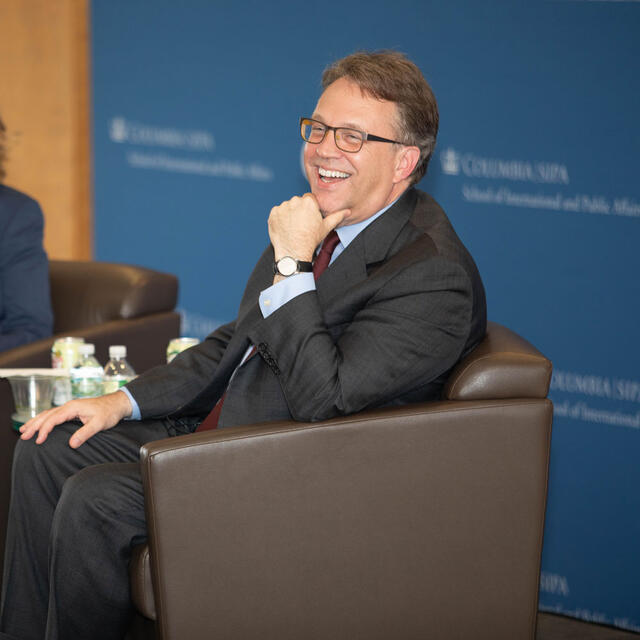
New President of New York Fed Speaks on Monetary Challenges

John C. Williams, the Federal Reserve Bank of New York’s new president, chose SIPA as the venue for the first formal speech of his tenure, on September 28. And when the president of the New York Fed speaks, the world listens.
A capacity crowd of economists, bankers, and business journalists from Wall Street to Frankfurt filled SIPA’s Kellogg Center to hear Williams talk about “Normal Monetary Policy in Words and Deeds.” Just as many tuned in via webcast.
As every SIPA student learns in first-year macroeconomics classes, Fed presidents like Williams have the power to move global financial markets with a single turn of phrase. So when Williams approached the lectern, reporters lining the back wall were poised at their keyboards, Slack channels to newsrooms open, twitter feeds live.
“For us to have this kind of conversation is great,” Williams said. “The Fed has a long tradition of constant dialogue and engagement with academics and market participants.”
“The good news is that 10 years after the crisis, the U.S. economy is doing very well overall,” he added. “From the perspective of the Fed’s dual mandate of maximum employment and price stability, quite honestly, this is about as good as it gets. As a result, the Fed has naturally been moving toward more “normal” monetary policy.”
In his speech he forecasted that he expects real GDP to increase by 3 percent this year and by 2.5 percent in 2019, and the unemployment rate to fall slightly below 3.5 percent next year, to the lowest levels in nearly 50 years.
Regarding some recent innovations in the way the FED is communicating to the public, Williams stressed that the FOMC has been “slimming down” its statements and using less forward guidance about the future path of policy. But he clarified immediately that these more concise statements do not signify a shift in the FED monetary policy approach. These changes should be read as a sign that we are nearing the end of the second stage of the normalization process and are inching closer to conducting normal monetary policy.
In his concluding remarks Williams said that “as we move toward more ‘normal’ conduct of monetary policy, we shouldn’t rest easy and think we won’t confront our own fair share of future challenges. The most important one in front of us today is sustaining the long economic expansion without allowing risks to grow that ultimately undermine economic prosperity.”
Guests at the event included Francesco Papadia, former director general for market operations at the European Central Bank, and Michael Woodford, the John Bates Clark Professor of Political Economy in Columbia’s economics department.
In opening remarks, Dean Merit E. Janow observed that SIPA is committed to the study of central banking and financial policy, and has sent hundreds of graduates to central banks and financial institutions around the world.
Maybe one of them will be in Williams’s shoes someday.
— Dominick Tao MPA ’19 and Martin Reydo MPA ’19